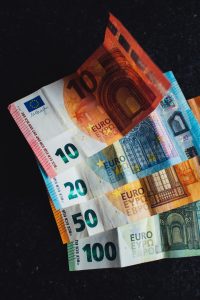Forex trading is a complex and challenging activity that requires careful consideration of various factors. One of the most important concepts in forex trading is the risk to reward ratio. In simple terms, risk to reward ratio refers to the ratio between the potential profit and potential loss in a trade. Understanding this concept is essential for successful forex trading. In this article, we will explore what risk to reward ratio is and how it can be used in forex trading.
What is Risk to Reward Ratio?
The risk to reward ratio is a simple ratio that compares the potential profit and potential loss in a trade. It is calculated by dividing the potential profit by the potential loss. For example, if the potential profit in a trade is $100 and the potential loss is $50, the risk to reward ratio would be 2:1. This means that the potential profit is twice the potential loss.
The risk to reward ratio is an important concept in forex trading because it helps traders to determine whether a trade is worth taking or not. A trade with a high risk to reward ratio is usually considered to be more attractive than a trade with a low risk to reward ratio. This is because a high risk to reward ratio means that the potential profit is greater than the potential loss.
How to Use Risk to Reward Ratio in Forex Trading?
The risk to reward ratio can be used in various ways in forex trading. Here are some of the most common ways:
1. Setting Stop Loss and Take Profit Levels
One of the most important ways to use risk to reward ratio in forex trading is to set stop loss and take profit levels. Stop loss and take profit levels are orders that are placed to automatically close a trade if the price reaches a certain level. The stop loss level is used to limit the potential loss in a trade, while the take profit level is used to secure the potential profit.
When setting stop loss and take profit levels, traders should consider the risk to reward ratio. A good rule of thumb is to set the stop loss level at a point where the potential loss is equal to or less than the potential profit. For example, if the potential profit in a trade is $100, the stop loss level should be set at a point where the potential loss is $100 or less.
2. Evaluating Trading Strategies
Another way to use risk to reward ratio in forex trading is to evaluate trading strategies. A trading strategy is a set of rules that a trader follows to enter and exit trades. When evaluating a trading strategy, traders should consider the risk to reward ratio.
A good trading strategy should have a high risk to reward ratio. This means that the potential profit should be greater than the potential loss. A trading strategy with a low risk to reward ratio is usually not worth taking because the potential loss is greater than the potential profit.
3. Managing Risk
Managing risk is one of the most important aspects of forex trading. Traders should always be aware of the potential risks involved in a trade and should take steps to manage those risks. One way to manage risk is to use the risk to reward ratio.
Traders should only take trades with a high risk to reward ratio. This means that the potential profit should be greater than the potential loss. By doing this, traders can limit their potential losses and increase their potential profits.
Conclusion
The risk to reward ratio is an essential concept in forex trading. It helps traders to determine whether a trade is worth taking or not. Traders should always consider the risk to reward ratio when setting stop loss and take profit levels, evaluating trading strategies and managing risk. By doing this, traders can increase their chances of success in forex trading.





